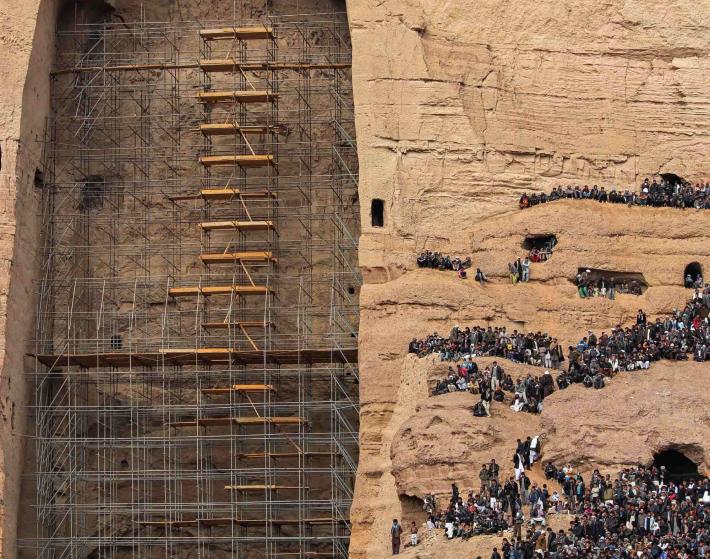Farhang Sara/Silkroad Cultural Initiatives (FS/SRCI), is a cultural project initiated by Aga Khan Trust for Culture (AKTC), in 2016. The project, which aims at promoting Intangible Cultural Heritage (ICH) along the Silk Road, has four components which include vocational training, conservation of heritages, cultural policy and surveying intangible cultural heritage in Afghanistan, and the art grants. Farhang Sara is designed to preserve heritage, improving living conditions, and revitalizing historical places.
Aman Mojadadi, a culture specialist at AKTC, says the main idea for SRCI project was to support the Intangible Cultural Heritage in Afghanistan. ICH is becoming the greatest fan everywhere; UNESCO is pushing it and it’s about things getting registered in the list of ICH at UNESCO.
“One step that I have taken in second phase of the project is that I have opened it up to citizens of other countries too. In phase one, the project was only open to Afghans but in the second phase, it is divided in three levels of engagement. First is Afghans living in Afghanistan and wanting to do projects in Afghanistan; second is Afghans living in SAARC countries and neighboring countries wanting to do projects in Afghanistan; and third is artists of SAARC and neighboring countries wanting to do projects in Afghanistan.”
Ideally the goal is to create more of an exchange program among the artist community of neighboring countries. It is not just looking at Afghanistan itself but the region because the Silk Road is not only for Afghanistan but for the entire region. Eventually the program will further expand to all the way to Europe so at one point extend this all along the Silk Road, which will hopefully happen in the last or third phase.
AKTC hopefully can initiate a project by themselves that is valuable in its importance and interest. Another way to open a space for only contemporary art is to exhibit with the collaboration of artists from other countries to expand more interactions which would lead to widening the knowledge of what art could be and lead in Afghanistan, he said.
Mr. Mojadadi says, “In Afghanistan, a large number of people are obsessed with the idea of creating ‘pure Afghani’ contemporary art, as if such term exists. There’s this strange approach here to contemporary art; it is this fear of there are too much foreign influence on Afghan art and culture. At universities, professors keep talking about Afghan poets, painters, and etc. Most of the Afghans stuck in that style of thirties that become so famous at the time including showing bazaar, boz kashi, and carpet waving. I mean people don’t even show works from foreign artists.”
As a result, not many opportunities, space, and freedom are given to the younger generation artists, who try to present more conceptual ideas and post-modern artworks. Many people including Shamsia Hassani and Wahab Momand are gone now by traveling to US, Germany, and other countries. This is another issue about the younger artists, who go to these institutions to make a lot of differences, but after sometimes they get frustrated and leave the people, who try to control the kingdom by being conservative.
Unfortunately due to many decades of war in Afghanistan, the art field is not much valued and improved. Therefore, most artists either gave up upon their dreams of becoming an artist, or they left for another country. However, AKTC has been trying to change circumstance by creating more opportunities for artists and cultural specialists to create more of artworks and preserve more of cultural heritages.
According to UNESCO, Intangible Cultural Heritage indicates the representations, practices, knowledge, skills of instruments, objects, artefacts, and cultural spaces associated with a particular community, group, and in some cases individuals. ICH is neither a concept nor an expression to be used in regular bases in the Afghan society.
Afghanistan is a rich country when it comes to cultural heritage. The two giant statues of Buddha in Bamyan, two ancient pre-Islamic heritage, the Jam Tower, the Citadel of Herat locally known as Qala Iktyaruddin. Decades of war have not only destroyed infrastructure of the country but also devastated cultural heritage of Afghanistan.




